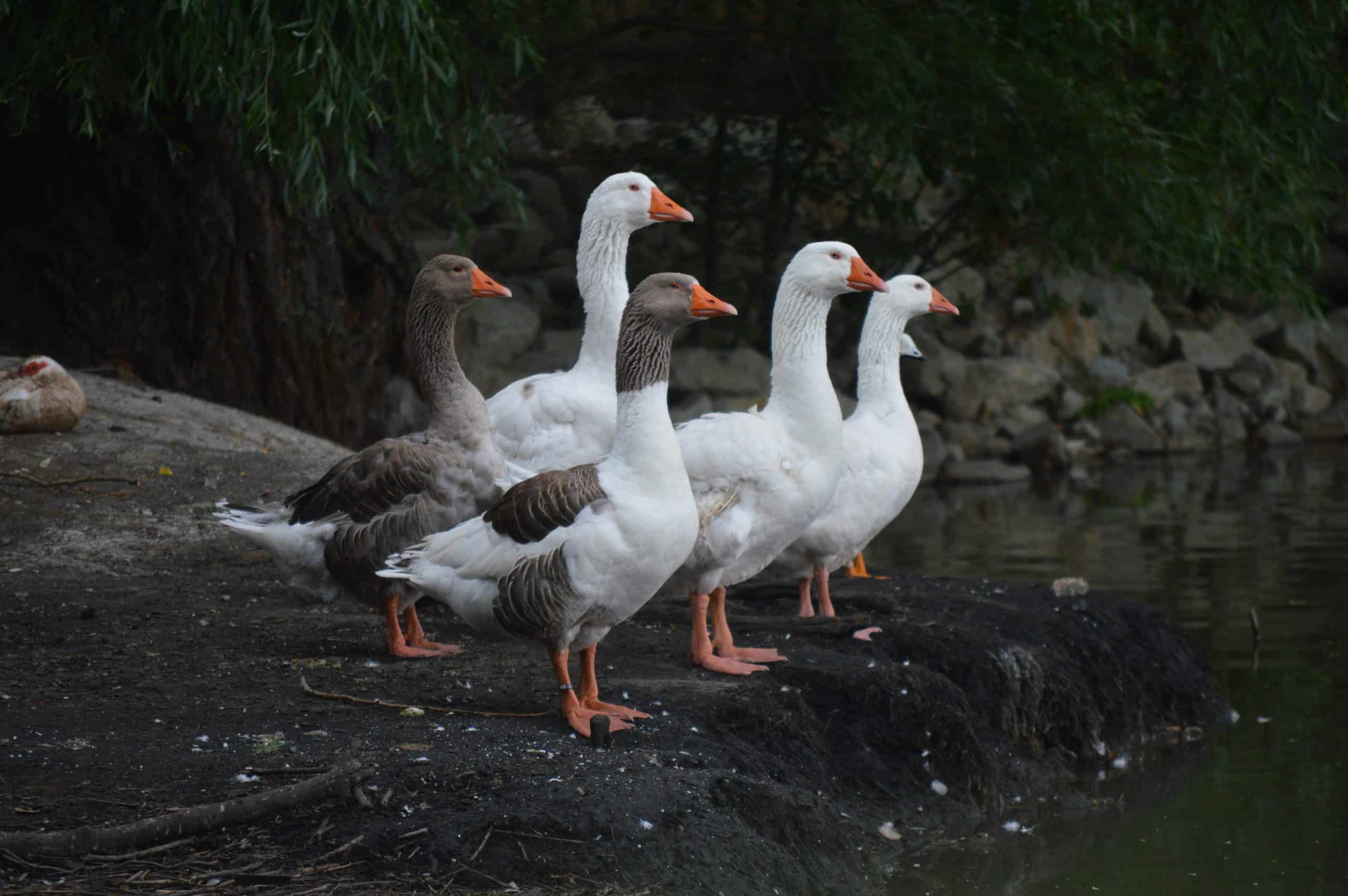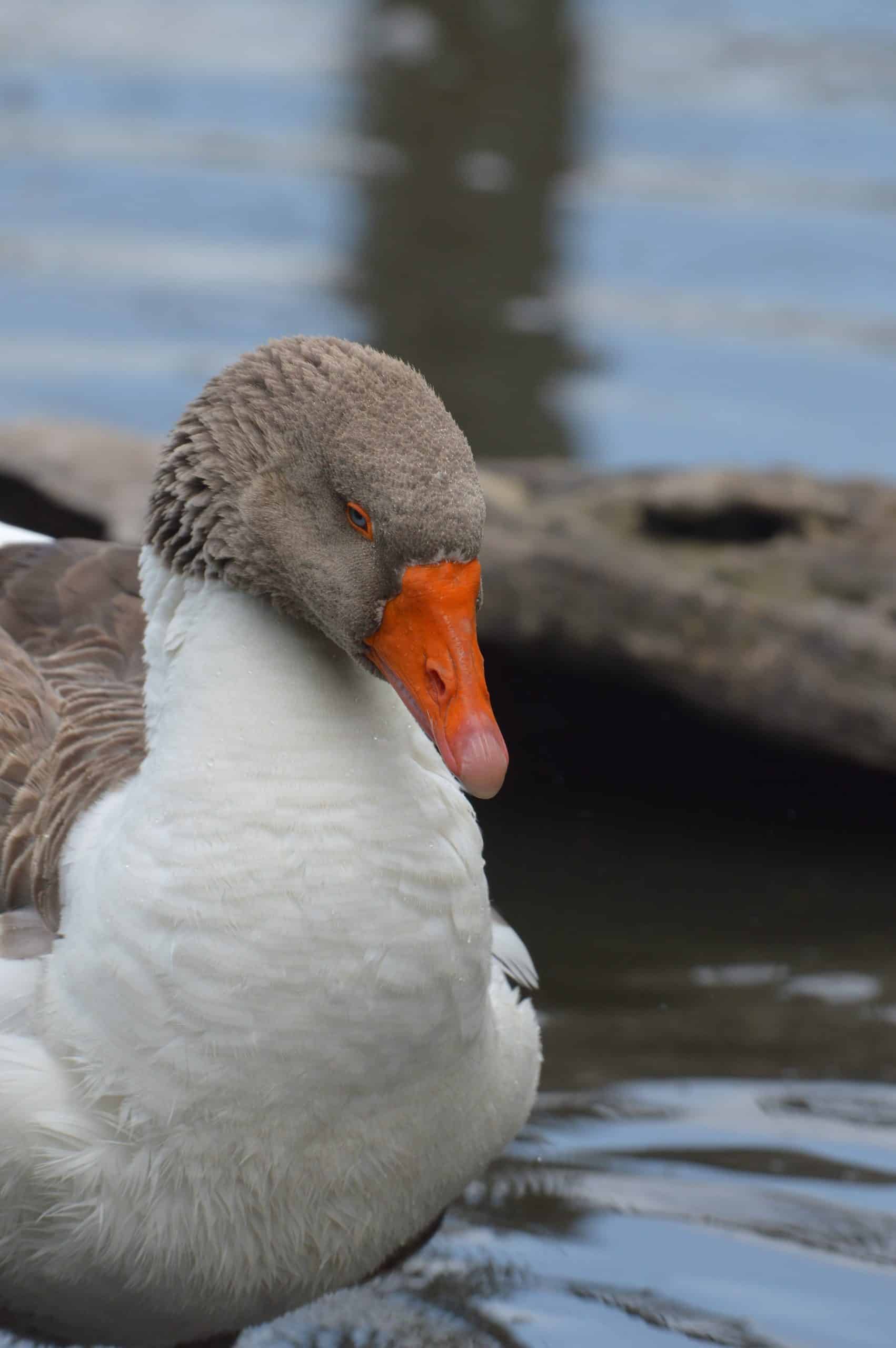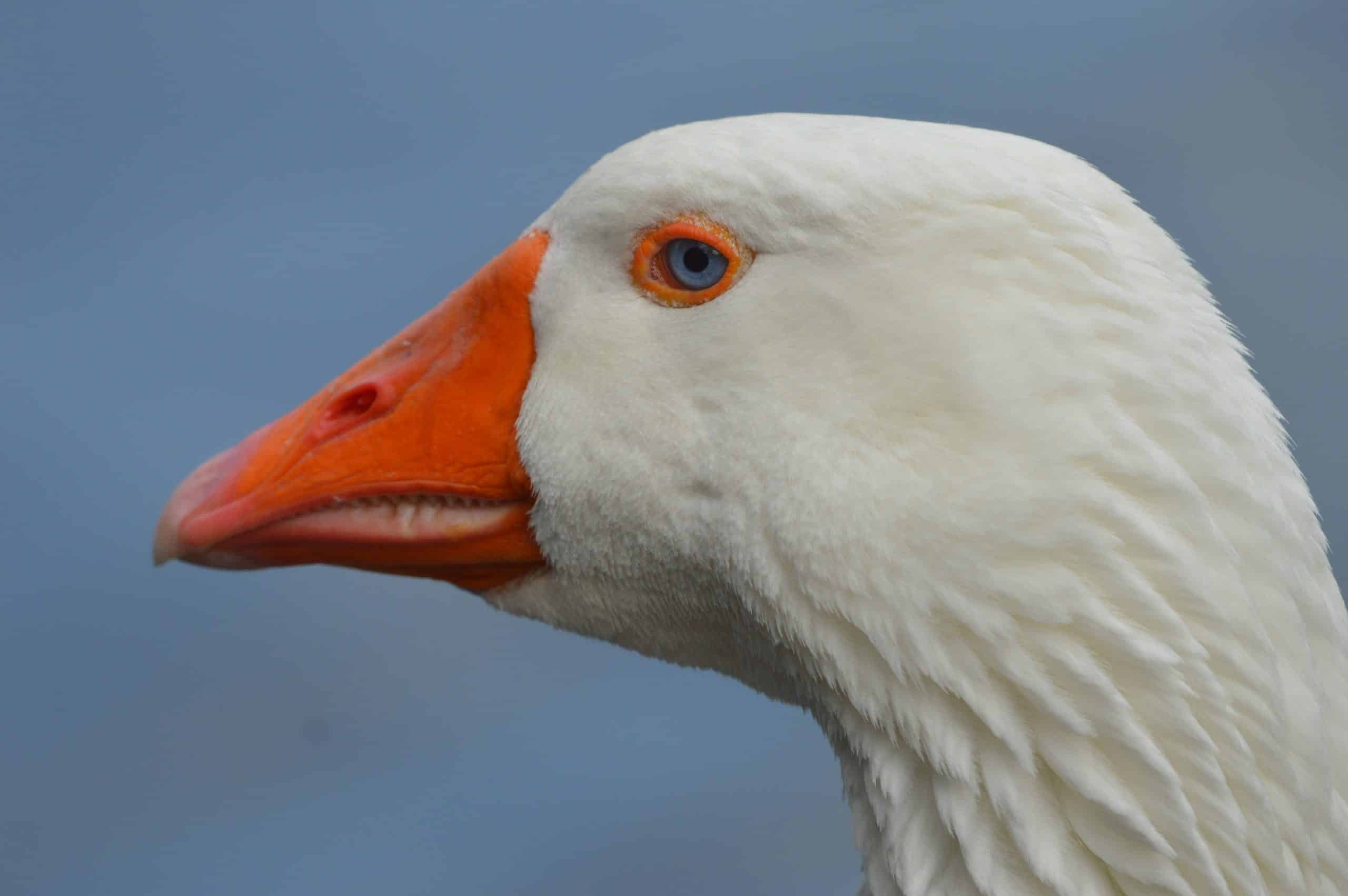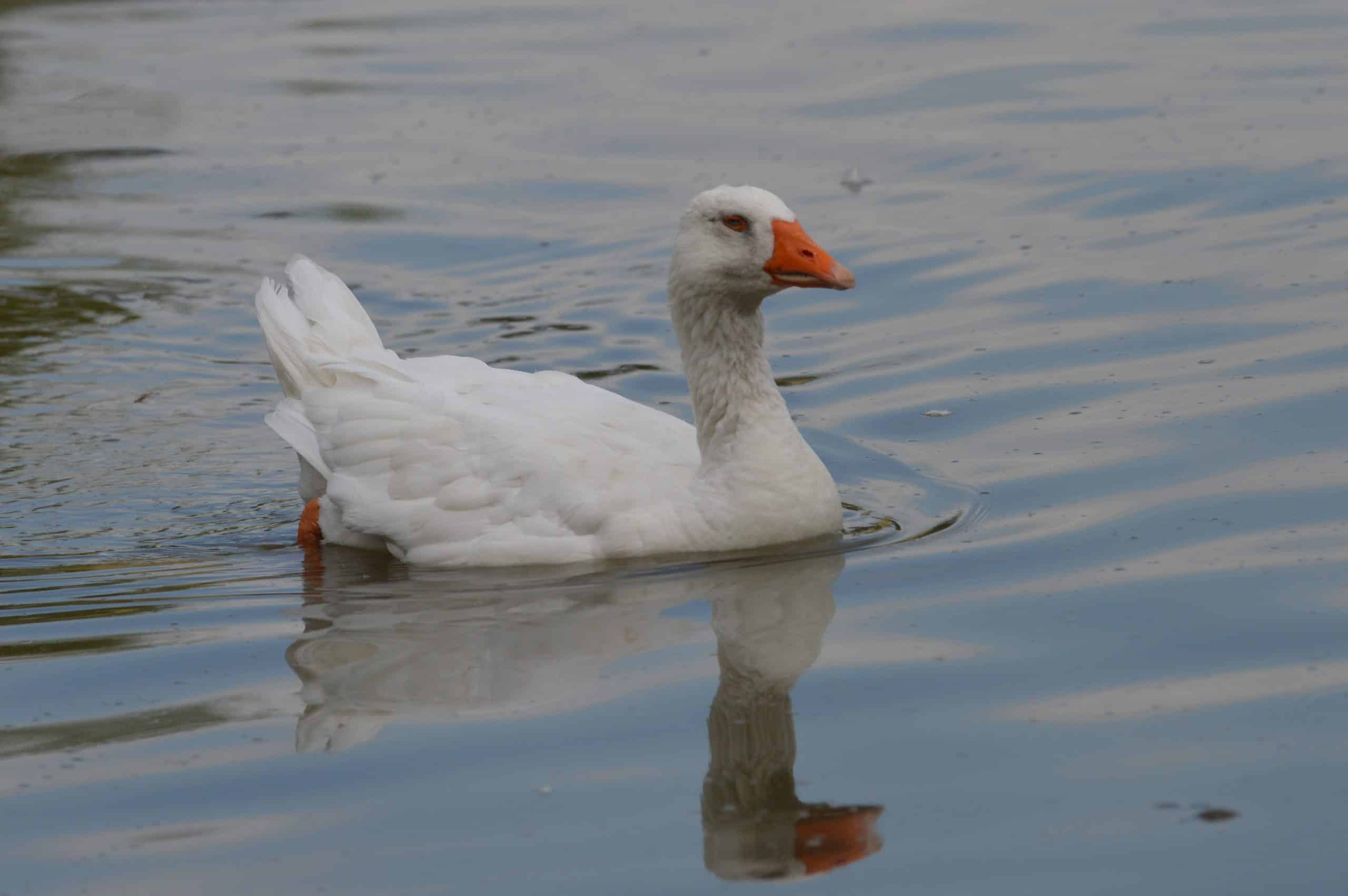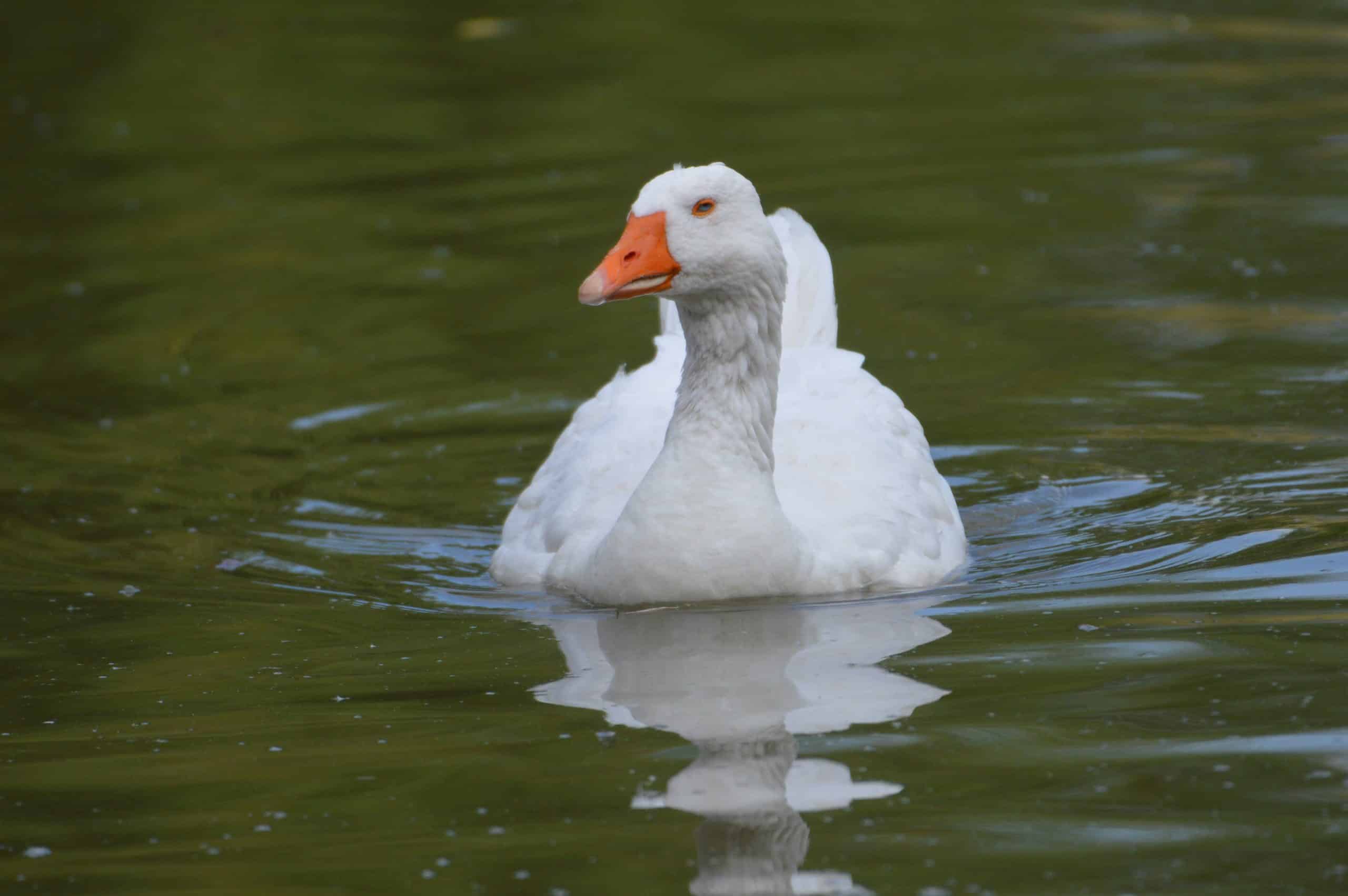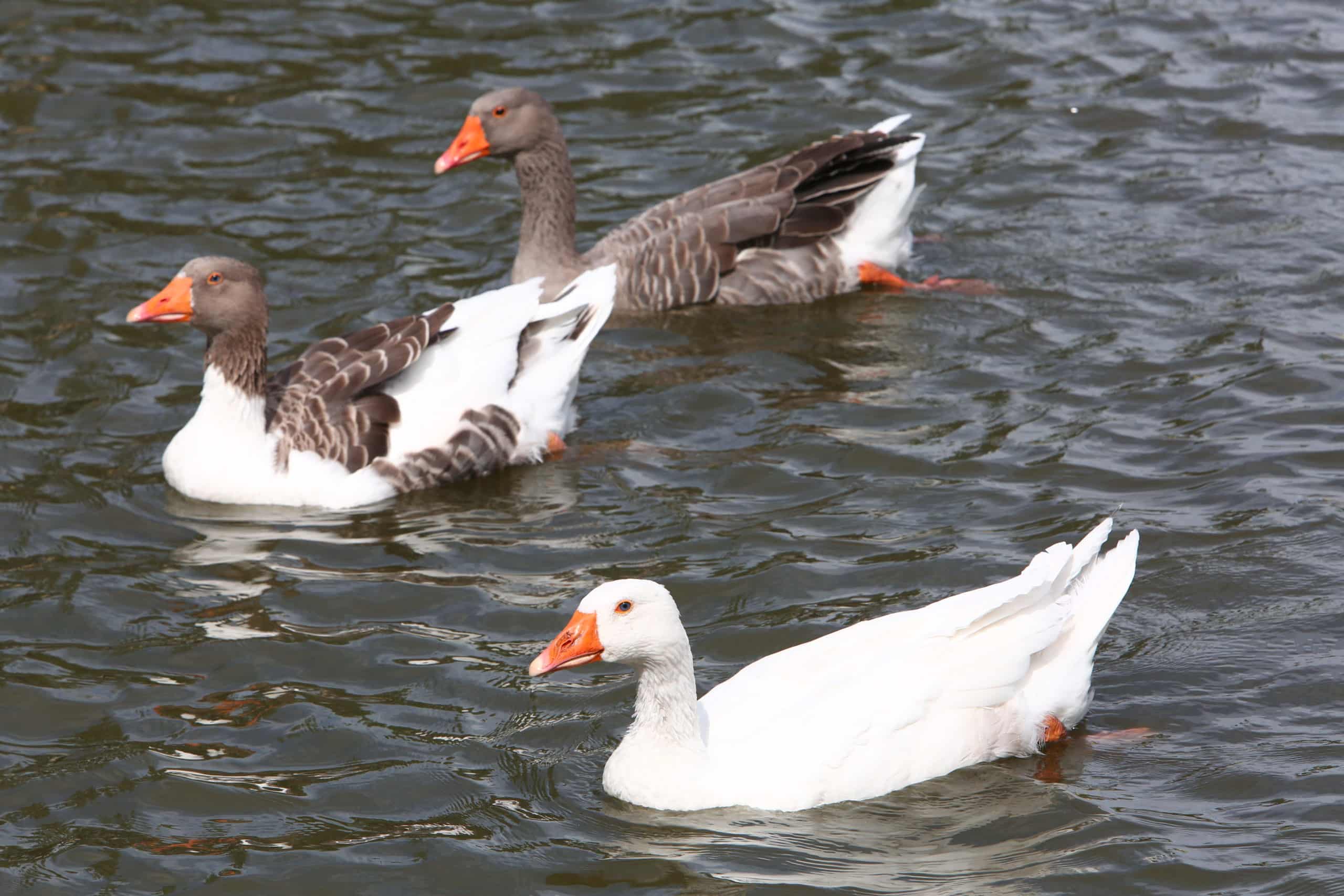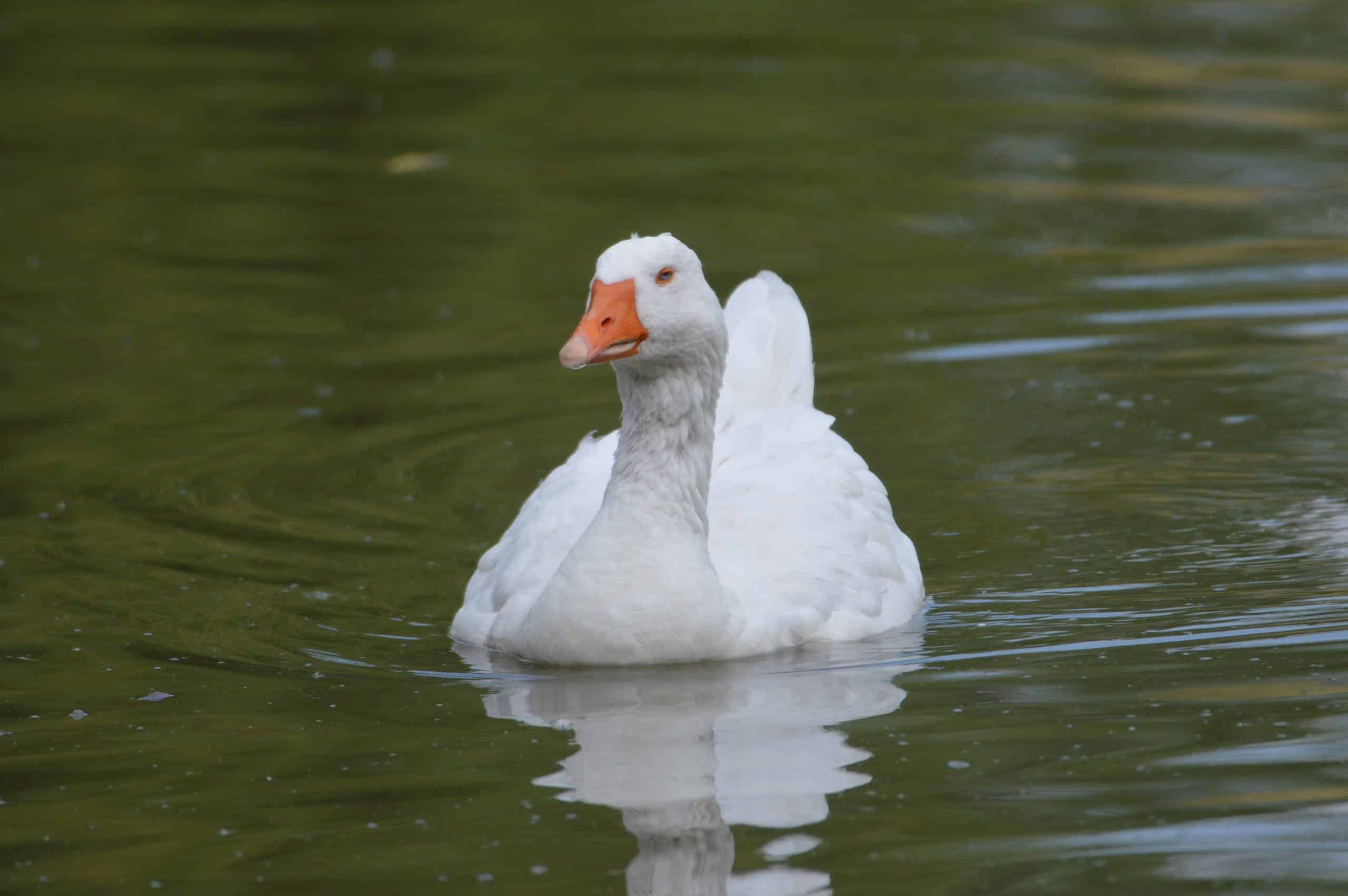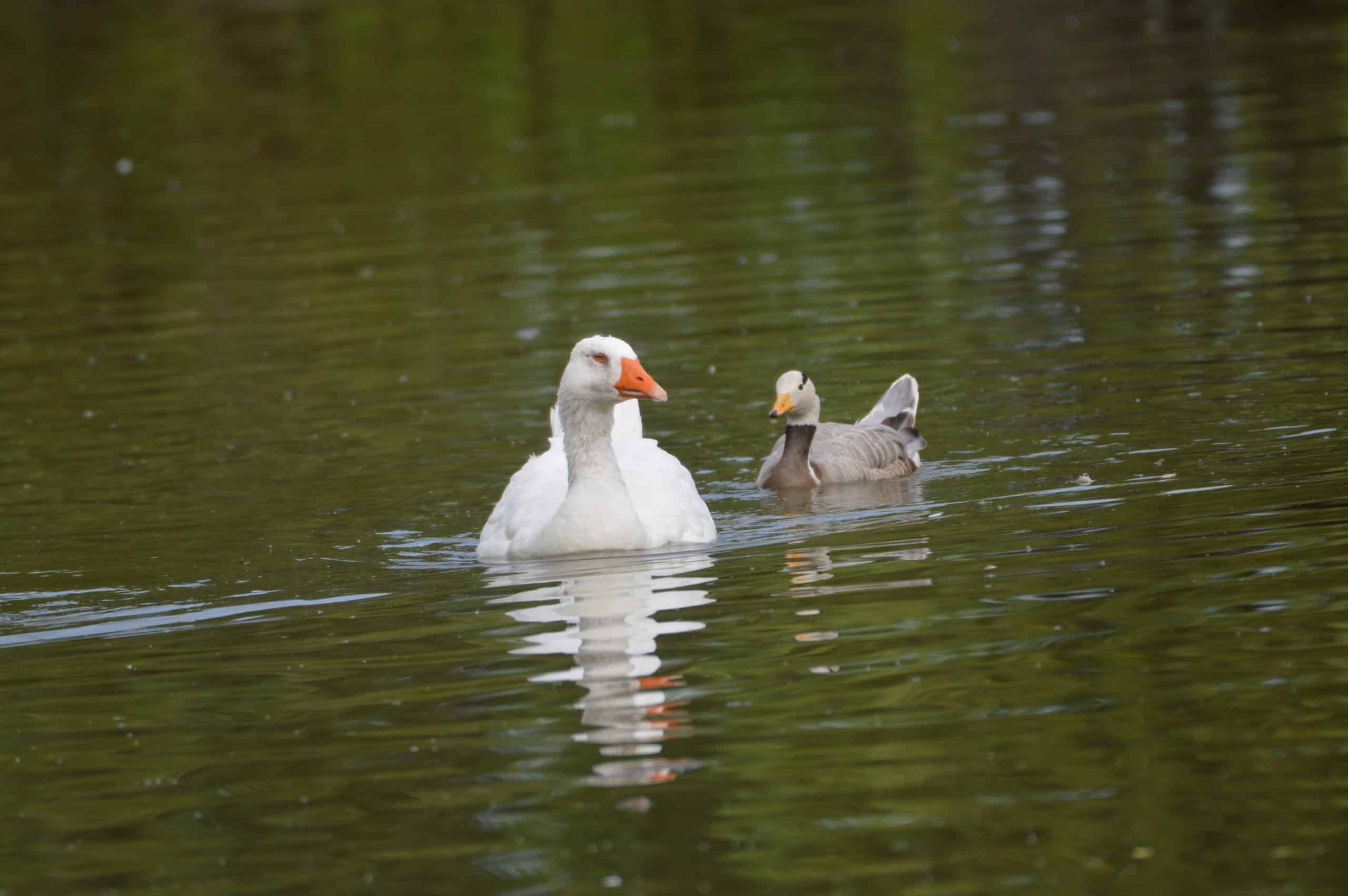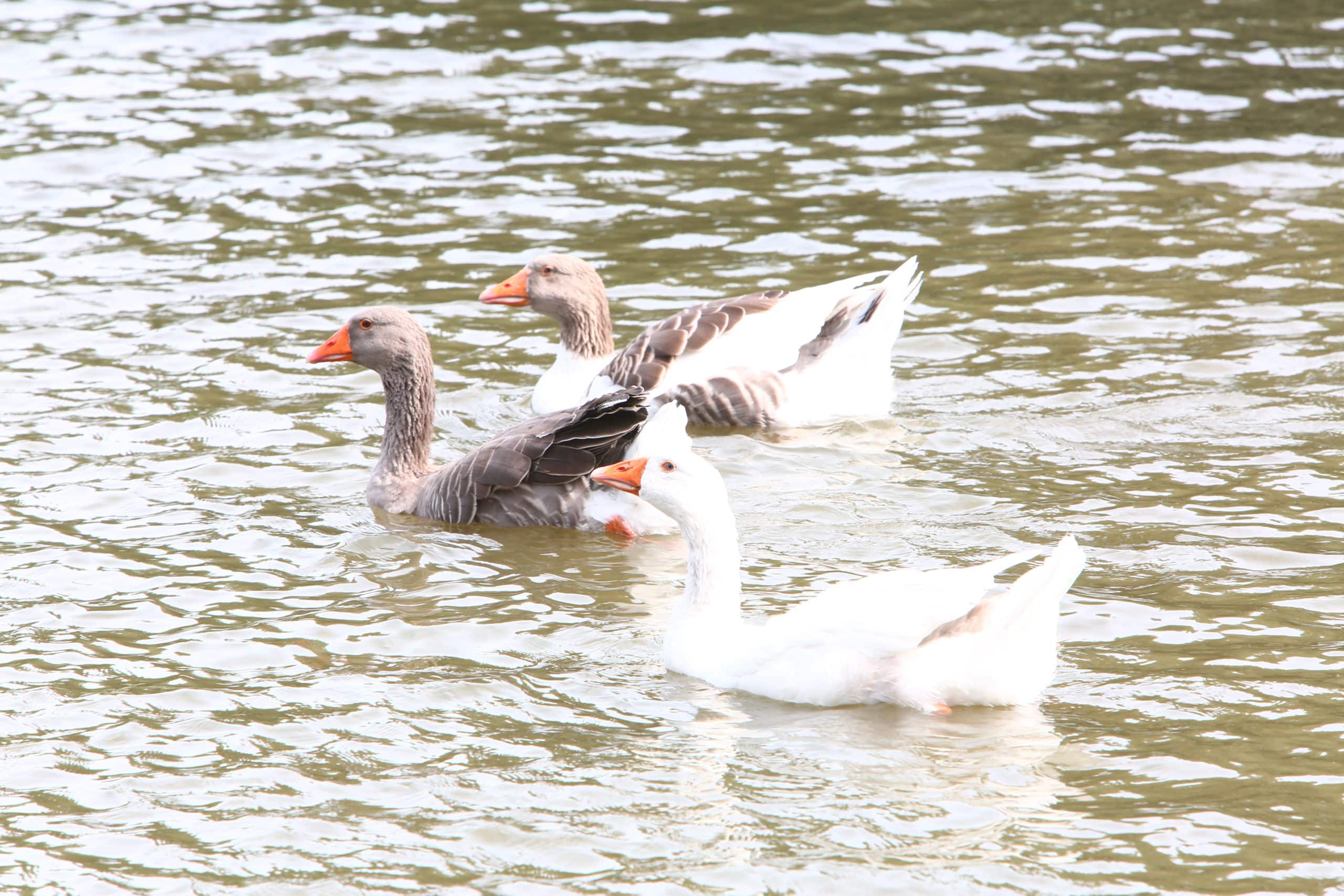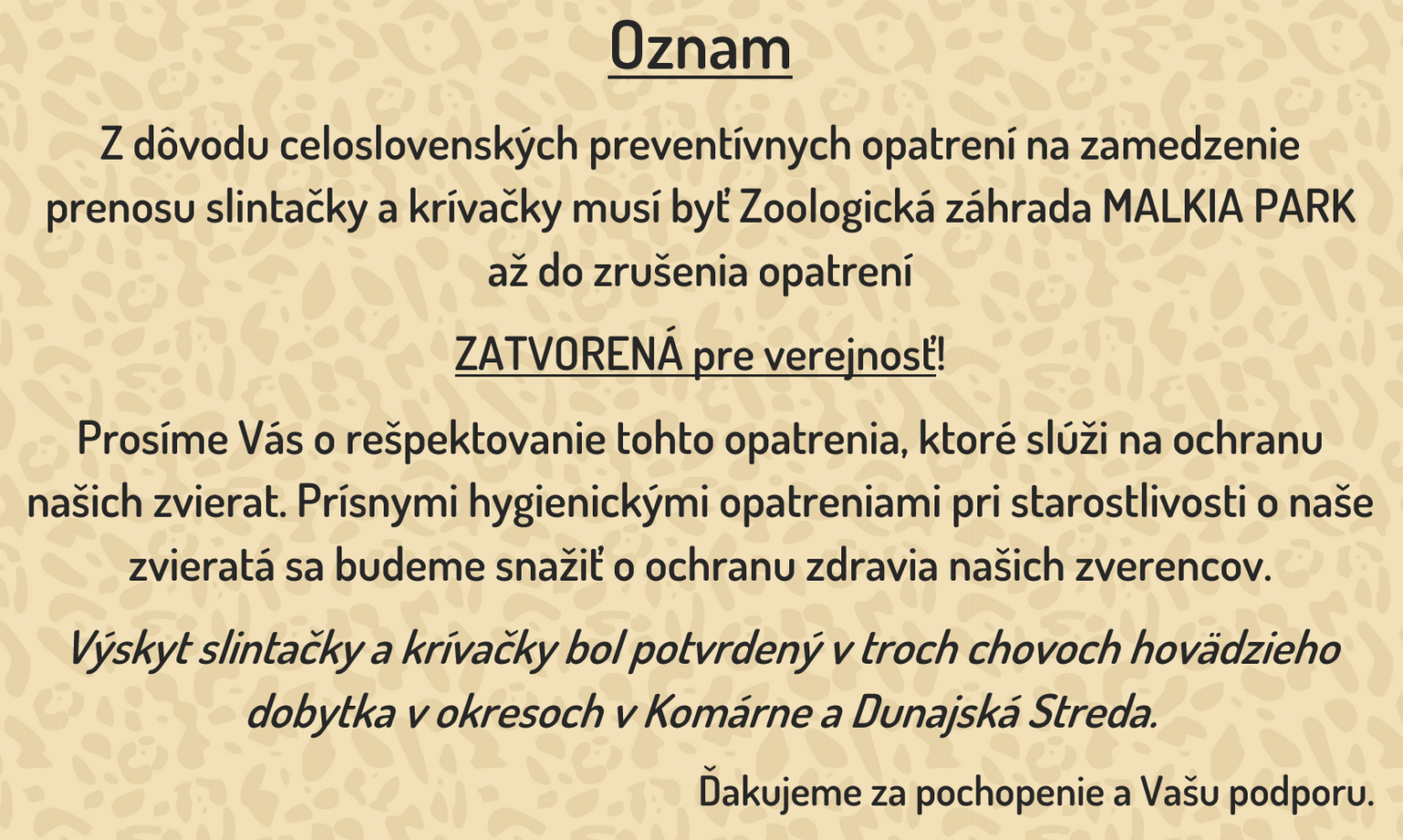Domestic geese have been selectively bred for size, which affects their body structure. While wild geese have a horizontal stance and a slender rear end, domesticated geese deposit large fat reserves towards the end of the tail, creating a “fat back” and forcing the bird into a more upright position. Although their great weight affects their ability to fly, most breeds of domestic geese are capable of flight.
Since most domestic geese show little sexual dimorphism, sex determination is based primarily on physical characteristics and behaviour. Males are usually taller and larger than females and have longer and thicker necks. In addition, males can be distinguished by the protective behaviour they exhibit towards their mates and their offspring – a male will usually put himself between his mate and any perceived threat.
The geese were selected to lose the dark brown tones of the wild bird. The result is an animal completely covered in white feathers. Grey plumage does not enjoy such great popularity.
Like their wild ancestors, domestic geese are fiercely protective of their offspring and other members of the flock. Most breeds have retained the instinct to brood and have no problem with both brooding and raising their own young.
Geese need both a water surface and a place to graze to carry out their natural behaviour.
Geese are raised in various parts of the world for meat, fat, delicate liver, eggs, and feathers.
Geese make excellent guard animals. In a flock, at least one always keeps an eye out and warns the rest of the group of approaching danger. In the late 1950s in South Vietnam, the VNAF used flocks of geese to guard parked aircraft at night.
In the Middle Ages, geese were of great economic importance as a source of cheap meat.
In our country, extensive breeding by local breeders is a tradition; large-scale breeding can be found, for example, in China.
Force-feeding, called “štopanie”, is a method of fattening used in both geese and ducks to obtain a fatty liver and fat, with the animal suffering from fatty degeneration.
